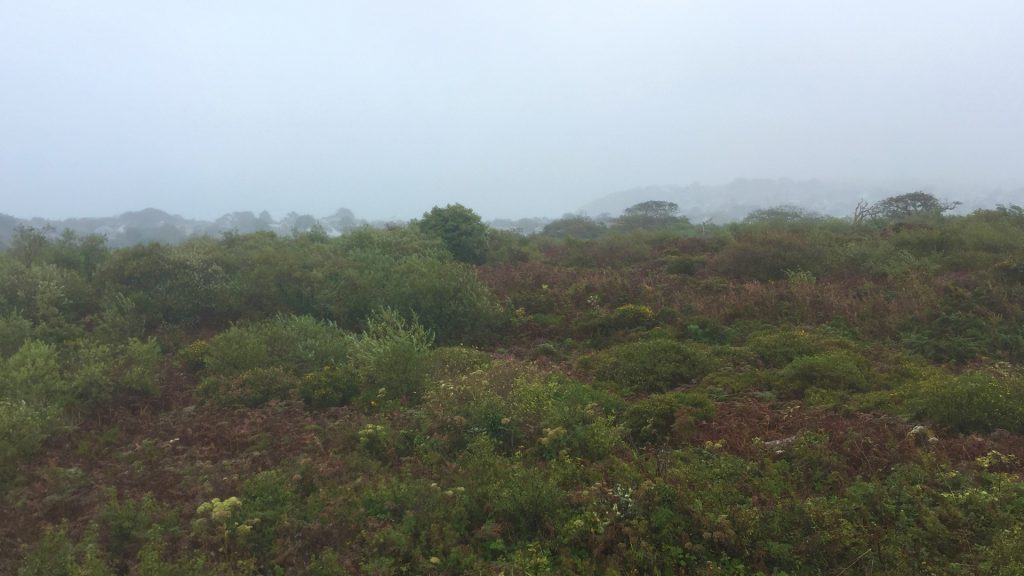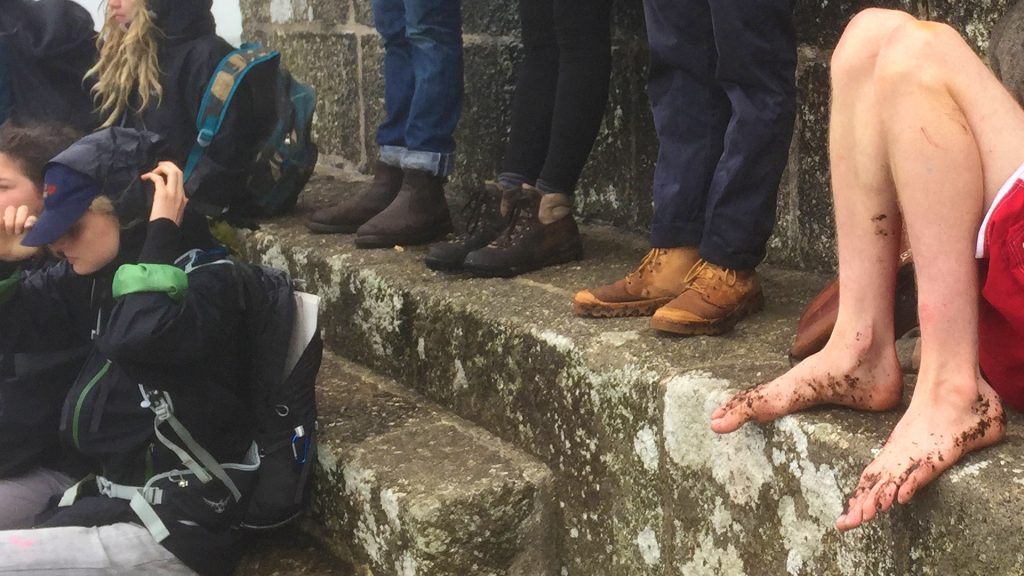At a party, someone asked me what kind of art I make. Stumbling, I said I make self-aware landscape paintings.
However, the most liberating piece of advice I’ve received recently was from a painter who told me to ‘embrace the Romantic’.
The Cornish landscape is a stimulant for unchecked self-expression. Remote and picturesque views are too easy to find. Unhealthy place-myths are born because artists romanticise already visually attractive locations.
On the day hurricane Irma made landfall in Florida, the ten participants on the Landscape Painters Anonymous (LPA) field trip met in windy drizzle at the Leisure Centre car park in St Ives, Cornwall, usually offering one of the best views of the seaside town. We set off on foot towards Trencrom Hill, a prominent viewpoint halfway between both coasts on the narrow peninsula.
En route everyone chatted, some reaffirmed friendships, while others got to know each other. We stopped in Steeple Woods, populated by old pollarded beech trees with gnarled, bending limbs. These became the focus of the first painting session. Once settled to paint, the group became noticeably silent, and the sound of wind in the leaves came to the fore.
LPA helps to lighten mythologies around the activity of landscape painting.
En plein air: literally ‘in the open air’.
Steeple Woods offered an enclosed environment with short vistas, dynamic shapes and perpendicular lines for lively compositions; a relief from horizons. On this otherwise grey day we found ourselves in a collage of lime green highlights layered over deep umber shadows.
When using watercolours, rain can become an unwanted collaborator. Laurence painted trees upside down so that drips became branches. One of Steve’s sensitive black line paintings of an old tree stump dissolved in mizzle leaving only its trace.
LPA is pragmatic.
I shy away from the notion that outdoor painting can be a spiritual experience. It might alienate anyone who doesn’t have those feelings.
I pretend to myself that landscape as subject is almost inconsequential.
Inspiration is normal.
When I’m asked (such as on a date) what kind of artist I am, I want to say post-conceptual landscape painter, but never do.
Aaron’s paintings of moss-covered tree trunks and rocks were enhanced by raindrops, which split the black pigment, creating a speckled organic effect like a layer of sediment collecting in patterned clusters.




